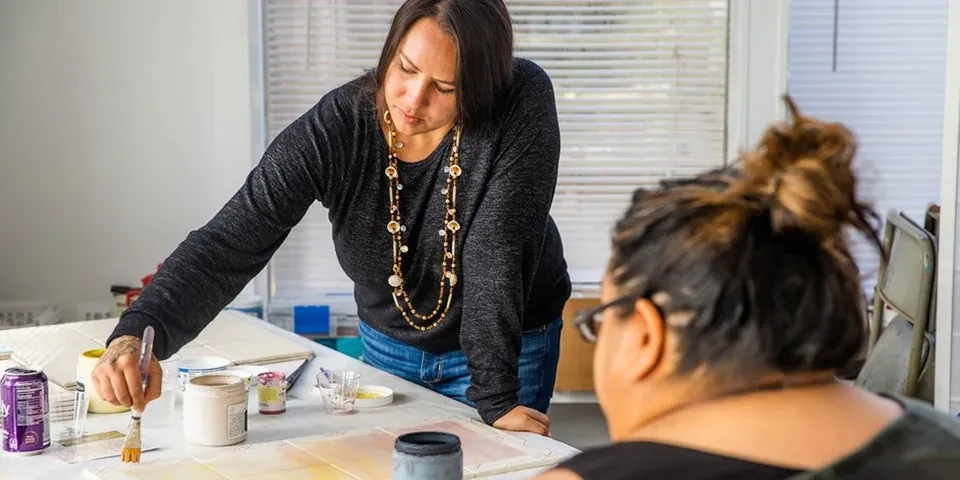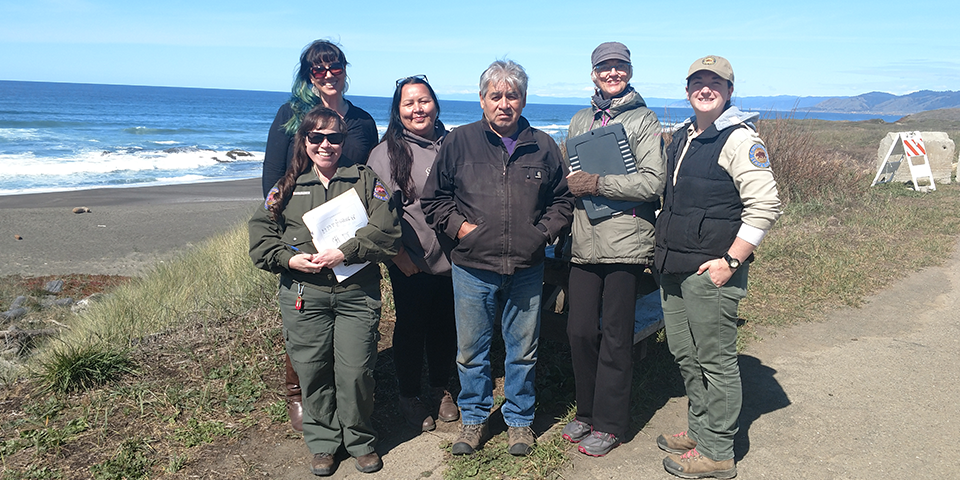The first California State Park was formed in 1864, but the history of land stewardship goes back to the beginning of time when the Indigenous tribes of California cared for and maintained the land we know today. Native American Tribes still call California home today, though their land has been taken from them and shrunk to a small piece of its original extent through state and federal government genocide over the last several hundred years. Because of this fact, it is natural that tribal members would be hesitant to work again with outsiders, but it is absolutely imperative that decisions are made with their input and design going forward to rebuild trust and care for the land.
We recently spoke with Elizabeth Cameron, Executive Director of MendoParks, the nonprofit partner supporting California state parks in Mendocino County, and Javier Silva, a member of the Sherwood Valley Band of Pomo Indians and a board member of MendoParks.
“I think that one of the best things park partners can do is to support and nurture these relationships,” Elizabeth told us regarding community engagement with Native American Tribes. Javier and Elizabeth both discussed their work together on various projects in Mendocino County state parks and how community engagement is crucial for building trust between the two organizations. There are 10 Native American tribes in Mendocino County, and MendoParks supports ten state parks within tribes’ ancestral homelands. Each tribe has its own decision-makers, leaders, governance structure, and interests which all must be considered when starting any new project. MendoParks works through California State Parks Tribal Liaison to communicate with tribes regarding proposed projects and programs.
Unfortunately, some state parks have no interpretive information about the Indigenous people that call them home. As Elizabeth explained “Park interpretation is not complete unless it includes Indigenous stories.” To share these stories, MendoParks has works with tribes as identified by California State Parks Tribal Liaison, as well as tribal members to amplify the indigenous presence at parks. To create 4 new interpretive panels at MacKerricher State Park (anticipated completion 2023), MendoParks worked with representatives from Sherwood Valley Band of Pomo Indians, Coyote Valley Band of Pomo Indians, and Round Valley Indian Tribes. At Mendocino Headlands State Park, bathrooms were recently remodeled featuring original tile art murals by contemporary Pomo artists Bonnie Lockhart (Northern Pomo, Kai Poma), Meyo Marrufo (Eastern Pomo), and Eric Wilder (Kashaya Pomo. . MendoParks also created “Park Adventure Coast Kits” during the beginning of the pandemic to offer self-guided education activities, including Pomo content. These “Kits” were distributed to local schools, providing many students with their first experience of Indigenous information as told by tribal members local to the area.)
Elizabeth emphasized that many of these projects are external facing, meaning that it is created for members of the public to come and learn about Native stories. Through listening sessions with Native community, as hosted by MendoParks, California State Parks, and Save the Redwoods League, they have the opportunity to hear firsthand from tribal members about pro-Native projects and programs they would like to see at parks. Many of the tribal lands are an hour or more away from the state parks, so transportation is often a primary concern for tribal members wanting to steward their ancestral land. “Having access to visit and camp at the parks is a goal, as is to set aside parts of the park for Tribal uses,” Javier told us.
There is also a difficulty in long-term relationships between tribes and California State Parks because of the nature of the organization. California State Parks is a government organization with many moving parts, and staff cycle in and out. Being a member of the tribal community is a lifelong relationship, so long-term planning with outside organizations can be challenging.
MendoParks has worked to close this gap by holding listening sessions, maintaining relationships with community members as well as leaders, and staying on top of external as well as internal projects.
As these relationships continue to develop, it is important that Indigenous voices are centered and brought to the table where decisions are being made because most of us are uninvited guests on their land. Now, we must have tribes guide decision-making around land stewardship issues and maintain community engagement with all parties that will be impacted by new projects.
You can learn about how MendoParks works with the tribal community at https://www.mendoparks.org/first-nations.
This article would not have been possible without contributions from Elizabeth Cameron and Javier Silva.

